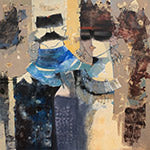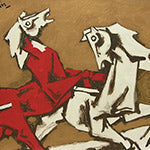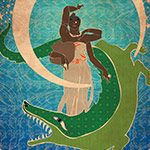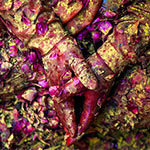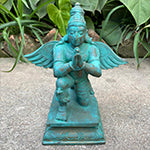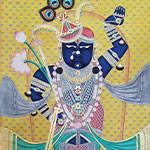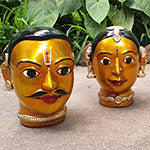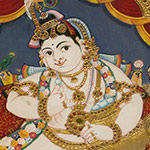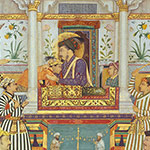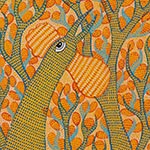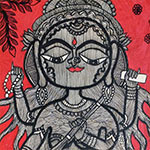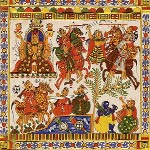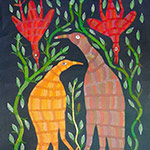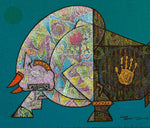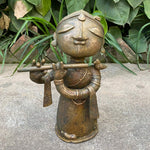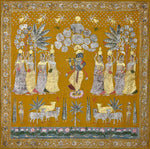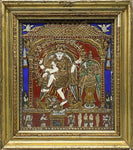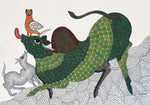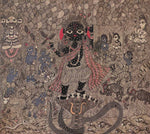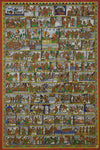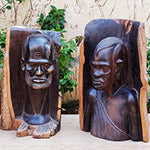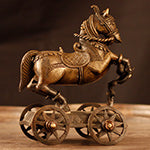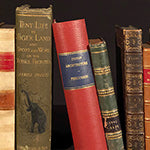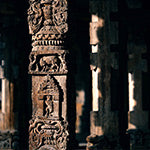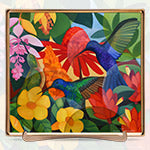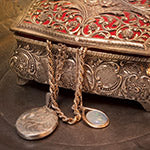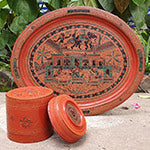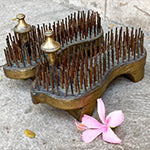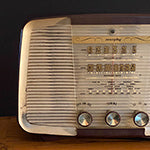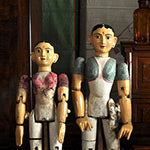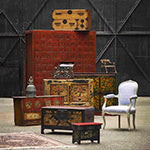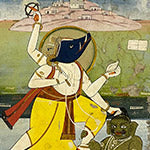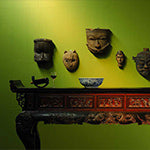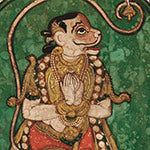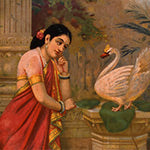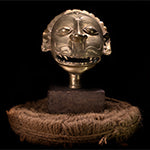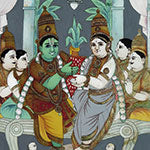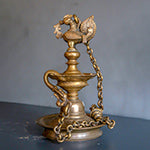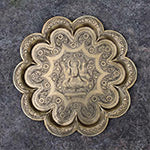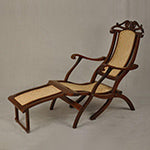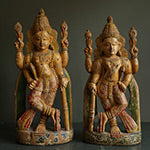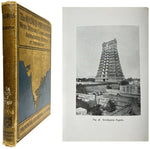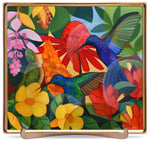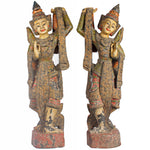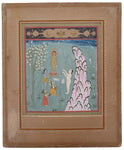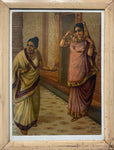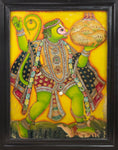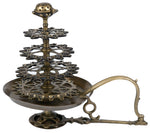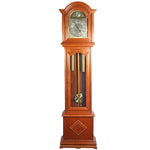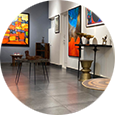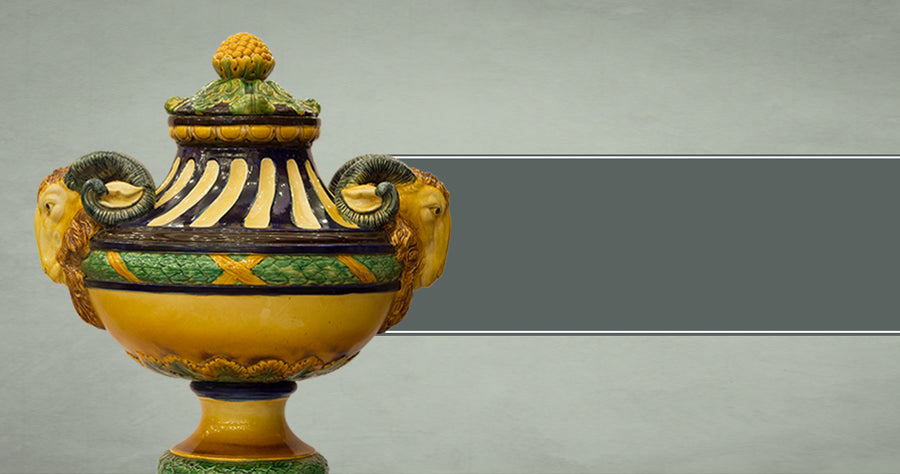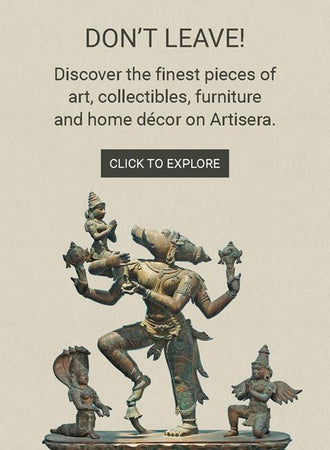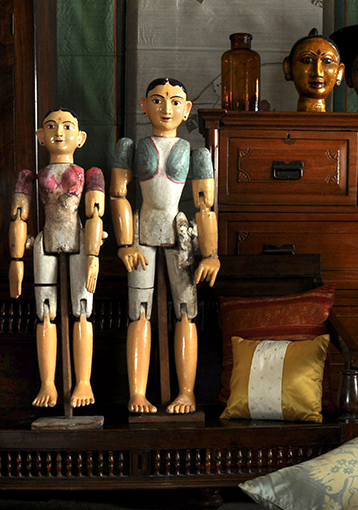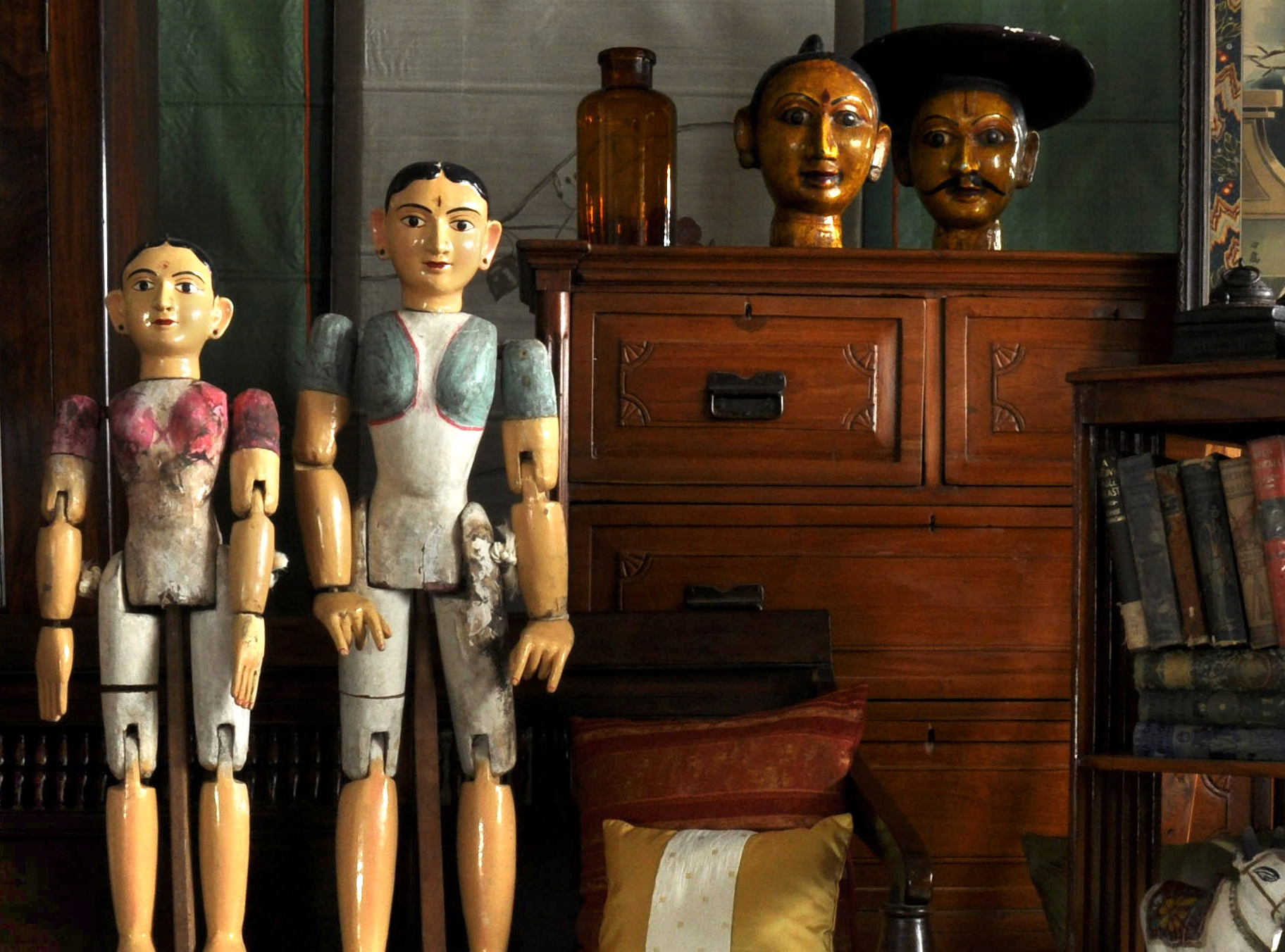Remembering M.F. Husain: An Undisputed Master of Indian Modern Art
Creators And CollectorsThe most well-known Indian artist of the 21st century, Maqbool Fida Husain has always been both a tall figure of admiration as well as a subject of immense controversy. Often dubbed the “Picasso of Indian Art,” the prodigious artist earned international renown for his remarkable career, undying enthusiasm and diligence, intriguing quirks, and a vast and dramatic oeuvre. Forging an image that matched the size of his huge canvasses, Husain passed away on June 9, 2011 in London, after creating around 40,000 paintings in his lifetime. Years after his death, the artist still continues to dominate Indian imagination – as a cause of outrage, a martyr of secularism, and as the greatest Modern Indian artist.
 M.F. Husain (Photo credit: Quartz India/AP)
M.F. Husain (Photo credit: Quartz India/AP)
Humble Beginnings Marked by Personal Loss
M.F. Husain’s extraordinary life and career have much to do with his humble beginnings. Born in 1915 in Pandharpur, Maharashtra, to a Sulaymani Bohra family, Husain was drawn to art right from his childhood. His mother passed way when he was only a year and a half old, and Husain has later revealed in interviews that painting was always an attempt to fill up the maternal absence in his life. “In Hindu culture it is the mother, Shakti, the goddess who takes care of us. My painting has always been a kind of searching for that,” he once said in an interview. In ‘Husain, Portrait of an Artist’ – the artist’s biography by Ila Pal, the author paints a stark picture of Husain’s memory of losing his mother. She mulls if this was why he found solace in the maternal figure of Mother Teresa in Kolkata, many years later.
 A serigraph of Mother Teresa by M.F. Husain; available for purchase on Artisera
A serigraph of Mother Teresa by M.F. Husain; available for purchase on Artisera
Husain grew up with a limited formal education, dabbling in Urdu poetry and taking evening classes in painting. Brought up by his father and step-mother, Husain’s childhood and early years were marked by genteel poverty, constant change of cities and a patchy education under the tutelage of a maulvi – an Islamic scholar.
A Career That Took Off with India’s Independence
Husain gave up his dream of studying at the Sir J.J. School of Art in Bombay as his parents could not provide him with the necessary financial support. He finally moved to the city of dreams in the 1930s, as a young adult in his 20s. Taking up the job of a cinema hoarding painter, he painted billboards for six annas – a former currency unit which was equal to ¹⁄₁₆ of a rupee. In order to earn some extra money, the artist worked for a toy company designing and building toys.
 Hindu Triad (2008-2011) by M.F. Husain
Hindu Triad (2008-2011) by M.F. Husain
(Photo credit: Victoria and Albert Museum, London)
The year 1947 defined M.F. Husain’s career in art – he was invited to join the Bombay Progressive Artists' Group (PAG) by artist Francis Newton Souza. The group, founded by iconic Indian artists like Souza and S.H. Raza, was going to change the landscape of Indian modern art forever, by combining Indian art history with modernist styles, and breaking away from the traditional styles of painting. It was through the PAG and their work that Husain developed his own modernist vocabulary.
Opportunities to exhibit artworks in Bombay followed, and by the 1950s, Husain was receiving international recognition. The PAG eventually dispersed, with Souza making his career in London, and Raza in Paris. But Husain stayed on in India, eventually becoming a household name that was synonymous with modern Indian art.
 The founding members of PAG - front row: F.N. Souza, K.H. Ara and H.A. Gade; back row: M.F. Husain, S.K. Bakre and S.H. Raza
The founding members of PAG - front row: F.N. Souza, K.H. Ara and H.A. Gade; back row: M.F. Husain, S.K. Bakre and S.H. Raza
A Star of the Indian Art Landscape
M.F. Husain was conferred with numerous awards and accolades in his lifetime, both in India as well as internationally. In India, he was bestowed with awards such as the Padma Shri (1955), Padma Bhushan (1973) and Padma Vibhushan (1991). Abroad, he won a Golden Bear Award at the Berlin Film Festival in 1967 for ‘Through the Eyes of a Painter,’ and in 1971, he was invited to display his works alongside those of Pablo Picasso at the São Paolo Biennale.
 Marathi Women (1950) by M.F. Husain (Photo Credit: Sotheby's)
Marathi Women (1950) by M.F. Husain (Photo Credit: Sotheby's)
Husain grew into the image of India’s national artist, and his signature sketches were displayed on restaurant walls and textiles. His love for cinema contributed significantly to him becoming the star of modern Indian art. Husain’s well-known admiration for Bollywood actors reflected on his canvasses, and he even had his own film ventures – ‘Gaja Gamini’ with his muse, Madhuri Dixit, in 2000 and ‘Meenaxi: A Tale of Three Cities’ with Tabu in 2004.
 M.F. Husain with Madhuri Dixit (Photo credit: Twitter @MadhuriDixit)
M.F. Husain with Madhuri Dixit (Photo credit: Twitter @MadhuriDixit)
A Celebration of the Composite Indian Culture
M.F. Husain’s idea of a multicultural, multireligious, and all-inclusive India often translated into his paintings, like his artworks portraying goddesses from Hindu mythology and his depiction of the Indian map in the form of goddess Durga. These paintings became the target of hurt religious sentiments and vehement anger from right-wing Hindu groups, prompting legal proceedings against the artist. Although Husain apologized for his painting ‘Bharat Mata’ (‘Mother India’), and insisted that he did not give the painting the mentioned name, he unfortunately received threats to his life.
 Left to right: Serigraphs depicting Hindu goddesses Laxmi, Saraswati and Durga by Husain;
Left to right: Serigraphs depicting Hindu goddesses Laxmi, Saraswati and Durga by Husain;
available for purchase on Artisera
Nonetheless, Husain always believed in the progressive India of his youth, chronicling India’s modern history and documenting its people – both famous as well as regular folks – until his death. Despite the many fundamentalists attacking his paintings, he remained optimistic and carried on with his work with the same enthusiasm. “It's not a lot of people. They have never stopped me working, they never will of course. There are no restrictions to what I do,” Husain was quoted as saying in a media interview.
Husain’s love for freedom can be seen in his recurring subject of valiant horses, often portrayed as powerful, majestic creatures charging forth in his artworks. Horses stood for grace and freedom for Husain, who found the inspiration to paint them, in his childhood. Growing up, Husain watched brightly decorated horses which were part of the huge processions carried out during the month of Muharram, and this later seeped into his canvasses to form brilliant, glorious figures.
 Sprinkling Horses by M.F. Husain (Photo credit: Christie's)
Sprinkling Horses by M.F. Husain (Photo credit: Christie's)
 A serigraph of Horses by M.F. Husain; available for purchase on Artisera
A serigraph of Horses by M.F. Husain; available for purchase on Artisera
Sanguinity, Resolve and Bare Feet
M.F. Husain is famous for his high energy and spurts of productivity right before shows and exhibitions. Decades of work and an estimated 40,000 completed paintings later, Husain’s productivity became a major part of his legend. He would often lock himself up in a room and work overnight, producing numerous paintings before a show. The artist said he owed his high energy levels to three factors – not worrying about critics, working on a daily basis, and never wearing shoes, as it was good for his knees, allowing him to sit on the floor and paint for hours.
 Three Dynasties (2008-2011) by M.F. Husain
Three Dynasties (2008-2011) by M.F. Husain
(Photo credit: Victoria and Albert Museum, London)
Husain believed that a painter’s job was to observe; he never voted, although he took active interest in politics, would watch political leaders speak at rallies in Bombay, and was committed to the new freedoms of independent India. Invited by Rajiv Gandhi to the Rajya Sabha of the Indian parliament, Husain attended sessions for six years and never spoke once. In his silence, he kept a sketchbook which he later published.
 The Puppet Dancers (1963) by M.F. Husain (Photo Credit: Sotheby's)
The Puppet Dancers (1963) by M.F. Husain (Photo Credit: Sotheby's)
A Tranquil, Nostalgic Yearning for Home
By 2011, aged 95, M.F. Husain was dividing his time between Qatar (he had obtained a Qatari citizenship) and London. He suffered a heart attack and passed away in London in 2011, after five years of living in self-imposed exile. The artist’s son, Owais, who is also an artist and filmmaker, recalls how in the final weeks of his life, Husain would obsessively make plans to return to India just for an afternoon, “perhaps to sit for a while in a tea shop.”
 Tale of Three Cities (2008-2011) by M.F. Husain
Tale of Three Cities (2008-2011) by M.F. Husain
(Photo credit: Victoria and Albert Museum, London)
Husain believed that his religion was no reason to hold back from drawing artistic inspiration from Hindu mythology and tradition, and he celebrated the composite Indian culture with aplomb. He had his own romantic, utopian idea of India, which lived on within him and consistently reflected in his art.
A martyr for India’s fight for artists’ freedom of expression, which has now snowballed into a larger movement, Husain is still invoked by activists as the tallest figure in Indian art who was forced to live and die in exile due to the hurt sentiments of a few fringe nationalists. Although the many years of Husain’s widespread celebration and controversy have passed, the visionary artist with his mane of white hair and breezy presence will always be remembered as India’s face of modern art.


